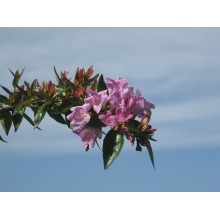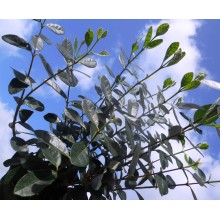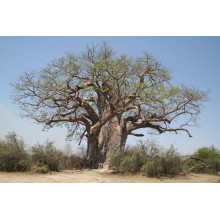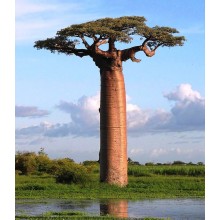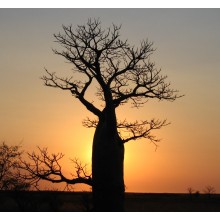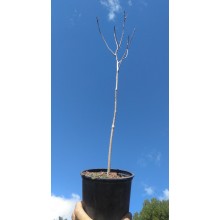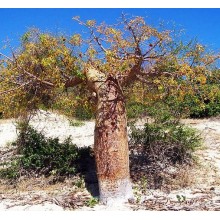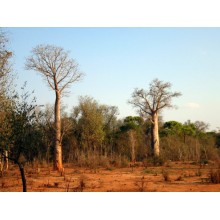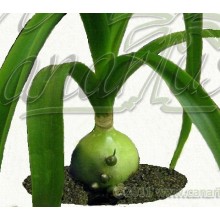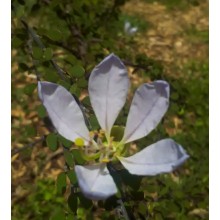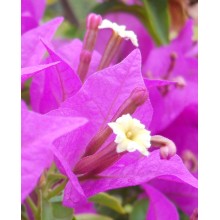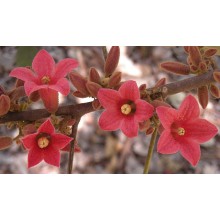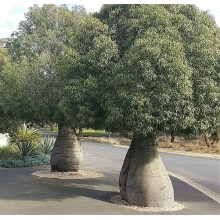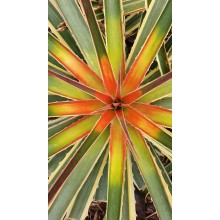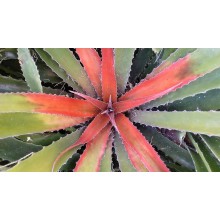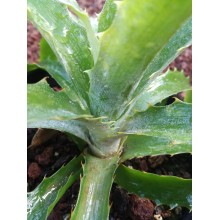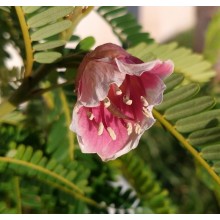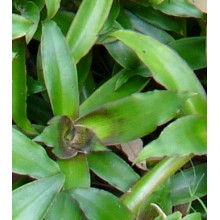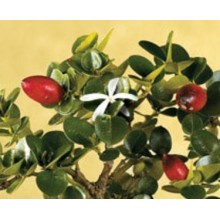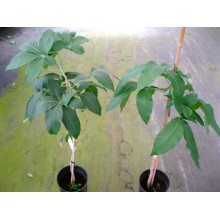Drought resistant plants There are 141 products.

In this plant section, we group together those plants which are adapted to arid or drought conditions. Normally, the majority of these species, grown in dry conditions, are waxy, succulent, hairy, sticky, needle-like and even, smaller than the rest.
In Drought Resistant Plants you can find any species with these features: Pithecellobium dulce, Ruta graveolens, Syzygium cordatum, Tamarindus indica and so on.
-
Abelia x Edward Goucher
Abelia x Edward Goucher
Semi-evergreen shrub with deep green foliage and long bloom time. This "Glossy abelia" has abundant lavender pink flowers and showy red calyces . Highly fragrant! The leaves retain the reddish foliage all summer long. Frost tolerant, while evergreen in frost free climates.
16,80 € -
Acca sellowiana - Feijoa
Acca sellowiana - Feijoa
Feijoa or "pineapple guava" is the fruit of an ornamental subtropical bush native to South America. Acca grows effortlessly in Mediterranean climates and fruits regularly. It bears beautiful pink flowers with edible petals! It sets fruits in pots.
39,30 € -
Adansonia digitata Senegal
Adansonia digitata Senegal
The African Baobab is a beautiful symbolic tree, able to attain a gigantic size. It is easy to cultivate in pots, as long as it is kept above 8 C and kept dry in winter, when leafless. Leaves are dark green, glossy and palmate. Flowers are an absolute beauty. The fruit is edible.
34,00 € -
Adansonia grandidieri
Adansonia grandidieri
This is the most fabulous of all baobabs. It is a giant tree from Madagascar, forming a missile-like trunk.
48,40 € -
Adansonia gregorii
Adansonia gregorii
The Australian Baobab, or Boab, is the only species existing outside of Africa and Madagascar. It is found in Northern Australia and grows into a huge bottle tree.
43,20 € -
Adansonia madagascariensis
Adansonia madagascariensis
Baobabs are deciduous trees. They leaf out late, usually in June and drop their leaves in October to March.
123,20 € -
Adansonia rubrostipa
Adansonia rubrostipa
This Adansonia rubrostipa 'Fony' is considered the cold hardiest of all baobabs.
46,70 € -
Adansonia za
Adansonia za
Adansonia za grows in different types of dry habitats, in the West and South of Madagascar. It builds trunks up to 10 m in diameter and bears large and beautiful orange flowers with a curly petal.
113,20 € -
Albuca bracteata
Albuca bracteata
Unusual bulbous plant with a showy, glossy green bulb growing above ground, up to 10 cm in diameter. Long pale-green leaves and tall spikes of fragrant flowers. Easy growing. It takes hard drought and frost to about -4 C.
13,70 € -
Bauhinia grandidieri
Bauhinia grandidieri
The most unusual of all the Bauhinias from Madagascar. This shrub has very architectural growth with small nice foliage and lots of blue-violet flowers. It takes harsh and cool conditions, so it is suitable for coastal Mediterranean gardens.
35,96 € 42,30 €Reduced price! -
Bougainvillea glabra Sanderiana
Bougainvillea glabra Sanderiana
This is an old classic bougainvilla, and it is hardier to cold than most types. It has very dark green leaves and an unmistakeable vibrant pink colour.
28,00 € -
Brachychiton bidwillii
Brachychiton bidwillii
Ornamental deciduous shrub to small tree native to Australia, 2-4 m tall . It flowers profusely before the new leaves appear. This is the cold-hardier form from Southern Queensland. It has beautiful deeply-lobed leaves and it can take frost to about -5 C.
29,30 € -
Brachychiton rupestris
Brachychiton rupestris
Admirable bottle tree from Australia, it grows a magnificen swollen green-gray trunk and a symmetrucal criown.
32,50 € -
Bromelia 'Que sera'
Bromelia 'Que sera'
Wow! "Qué será", Whatever will be will be, is a supershowy, fiercely spined bromeliad suitable for non-tropical climates. Its leaves have cream-yellow stripes on dark green with pink hues. It is not too large and eventually produces a spectacular red inflorescence. It is remarkably hardy to light frosts.
47,50 € -
Bromelia flemingii
Bromelia flemingii
Bromelia flemingii, is a bromeliad with ferocious thorns, suitable for non-tropical climates. Its leaves are dark green with pink hues. It produces a spectacular red inflorescence. It is remarkably resistant to light frost.
39,00 € -
Bromelia karatas - Piñuela
Bromelia karatas - Piñuela
Spiny terrestrial bromeliad with tasty edible fruits. This Bromelia is one of the most widespread of all, since it grows wild from Mexico to Brazil.
41,00 € -
Cadia purpurea
Cadia purpurea
Cadia is an ornamental shrub from Eastern Africa and Arabia, at 500-2100 m asl. It has graceful arching branches with pinnate leaves and bell-shaped pink to purple flowers.
48,30 € -
Callisia fragrans
Callisia fragrans
Pack of 2 rosettes of 10-20 cm - Ornamental creeping plant with funnel-shaped rosettes producing tall spikes of cream-white flowers. It is a semi-succulent, said to have medicinal properties. It can be grown in baskets, simple pots or as a ground cover.
10,60 € -
Carissa macrocarpa
Carissa macrocarpa
Spiny evergreen shrub with fragrant jazmine-like flowers and red, fleshy fruits. They are edible and sweet despite bleeding a white sap when cut.
28,40 € -
Casimiroa edulis 'Wilson'
Casimiroa edulis 'Wilson'
White sapote, Casimiroa edulis, also known as cochitzapotl in the Nahuatl language (meaning '"sleep-sapote") is a species of tropical fruiting tree in the family Rutaceae, native to eastern Mexico and Central America south to Costa Rica.
59,50 €
At the moment there are few products in this category Drought resistant plants
















